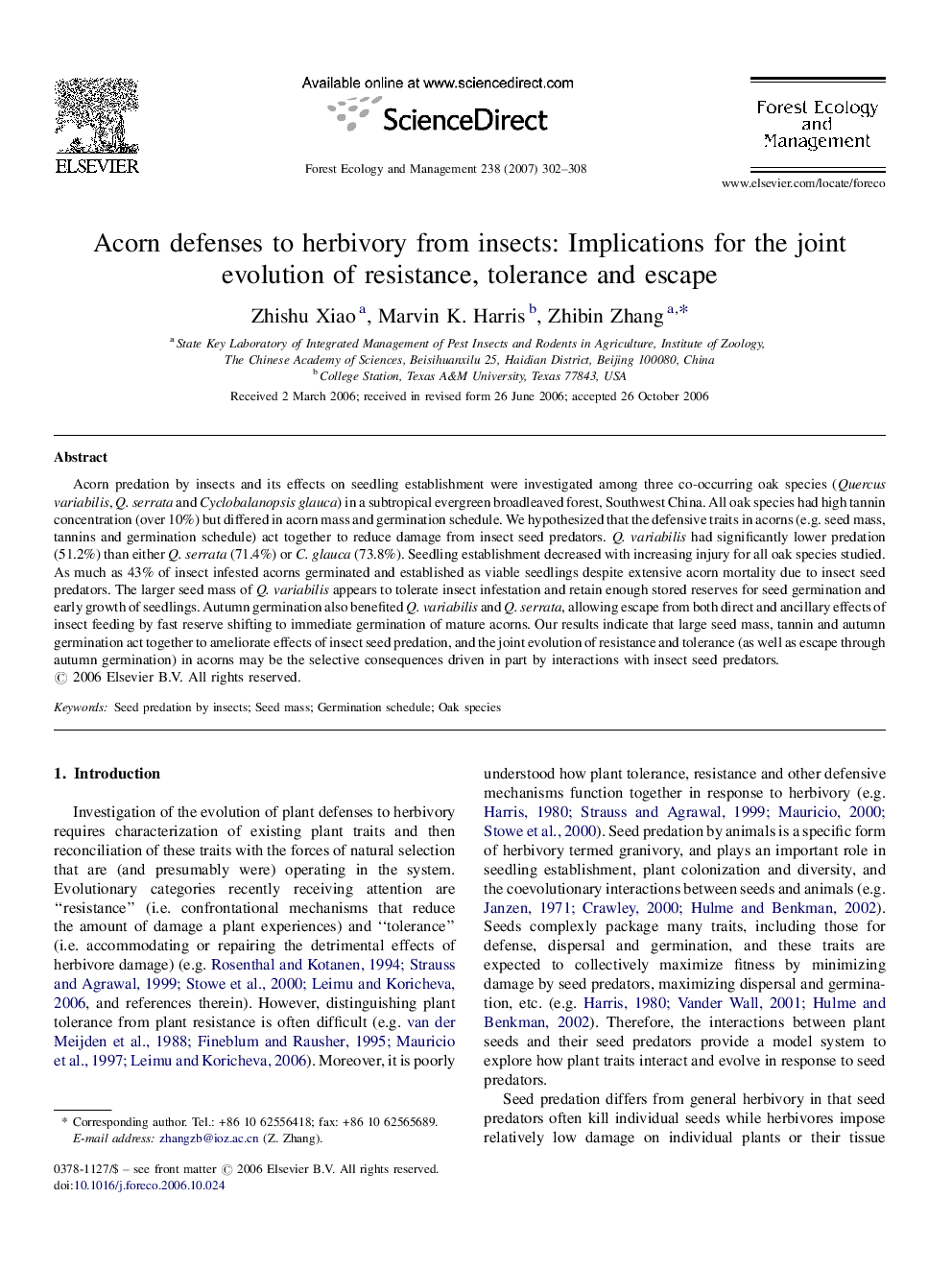| Article ID | Journal | Published Year | Pages | File Type |
|---|---|---|---|---|
| 90260 | Forest Ecology and Management | 2007 | 7 Pages |
Acorn predation by insects and its effects on seedling establishment were investigated among three co-occurring oak species (Quercus variabilis, Q. serrata and Cyclobalanopsis glauca) in a subtropical evergreen broadleaved forest, Southwest China. All oak species had high tannin concentration (over 10%) but differed in acorn mass and germination schedule. We hypothesized that the defensive traits in acorns (e.g. seed mass, tannins and germination schedule) act together to reduce damage from insect seed predators. Q. variabilis had significantly lower predation (51.2%) than either Q. serrata (71.4%) or C. glauca (73.8%). Seedling establishment decreased with increasing injury for all oak species studied. As much as 43% of insect infested acorns germinated and established as viable seedlings despite extensive acorn mortality due to insect seed predators. The larger seed mass of Q. variabilis appears to tolerate insect infestation and retain enough stored reserves for seed germination and early growth of seedlings. Autumn germination also benefited Q. variabilis and Q. serrata, allowing escape from both direct and ancillary effects of insect feeding by fast reserve shifting to immediate germination of mature acorns. Our results indicate that large seed mass, tannin and autumn germination act together to ameliorate effects of insect seed predation, and the joint evolution of resistance and tolerance (as well as escape through autumn germination) in acorns may be the selective consequences driven in part by interactions with insect seed predators.
